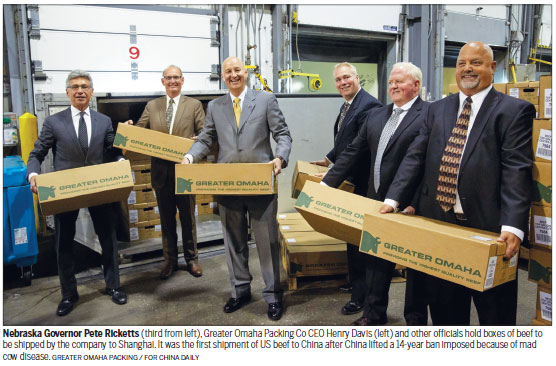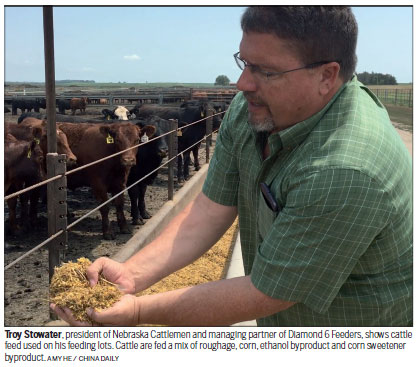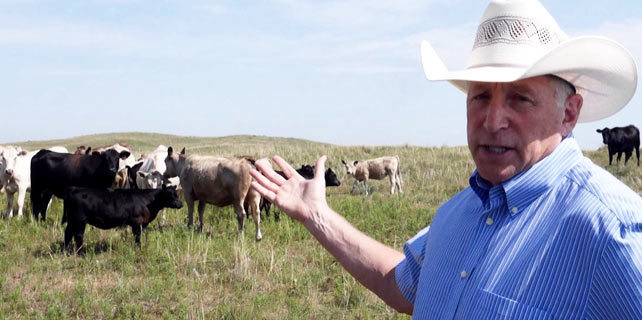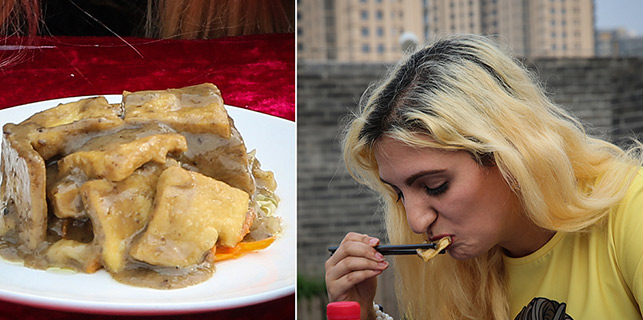Nebraska has stake in beef exports
US state sends first batch of steaks to China since ban lifted
Nebraska Governor Pete Ricketts was excited when he saw off the first shipment of US beef products on a flight to a client in Shanghai on June 14. It came after a 14-year absence in the market, and Ricketts realized that it signaled a new era for his state's agricultural sector.
"Having a great market like China open up for us was really fantastic news for our ranchers here, and an incredibly exciting opportunity for our state," Ricketts said in an interview in his office on the day of that flight.

"If we can achieve the same sort of market share in China as we've achieved in other countries, that could mean a potential 20 percent increase in the exports of beef from Nebraska, potentially [adding] another $200 million to the economy for us," the governor said. "This is a big deal for us."
That first test shipment to China from Greater Omaha Packing Co, one of the biggest beef processors in the country, carried not only individually wrapped steaks - rib eyes, tenderloins and New York strips - but also represented a new opportunity for cattle ranchers across the Cornhusker State and other beef-producing states in the United States.
China's lifting of a ban imposed on US beef imports in 2003 - because of a case of mad cow disease - fulfills one of the achievements of a Sino-US 100-day action plan, which was reached by President Xi Jinping and US President Donald Trump during their meeting in Florida in April.
During the meeting, Xi and Trump agreed to establish new bilateral mechanisms, including a comprehensive economic dialogue and initiate a 100-day economic cooperation plan, regarded as win-win moves by experts. In May the two countries announced initial results in areas like agriculture, electronic payments, financial services and energy, and proposed that China begin importing US beef no later than July 16, according to a US Department of Commerce release dated May 11.

Agriculture is the biggest economic driver in Nebraska, and beef exports are its biggest segment. With 18 percent of all beef exported from the US coming from the Midwestern US state, it is the country's No 1 beef and beef product exporter, creating $1.1 billion for the state.
Seeing the first beef shipment sent to China was "extremely exciting for the 1,150 people who work at Greater Omaha", said Henry Davis, president and chief executive of the company. "It solidified that we're able to sell beef in any market around the world and meet everyone's requirements."
Angelo Fili, executive vice-president at Greater Omaha, said China became the company's 69th export country this year, and though the market consumes much less beef than others - around 8 pounds of beef and veal are consumed per capita, compared with 54 pounds in the US, according to the Omaha Economic Development Corporation - any opportunity to increase that figure, even minimally, represents a positive for the industry.
"People always want to be first into the market, but the reality is we were first, and China is really a bigger notch than anything we've done because it's such a large market," he said.
Nebraskan ranchers have been preparing for beef trade with China to resume since it was announced last September that the Chinese Ministry of Agriculture lifted its ban.
Beef was one of the main focuses of a trade mission that Ricketts led to China late last year. Nebraska also has hosted many Chinese delegations over the years that have looked at cattle ranches and feedlots, according to Nebraska Cattlemen, a cattle rancher association.
The state had about 6.45 million cattle as of January and is home to 19,000 ranches, as well as Greater Omaha Packing and Tyson Foods. There are four USDA-approved meatpackers for shipments to China: Tyson, Greater Omaha Packing, JBS USA and Creekstone Farms Premium Beef.
The Chinese mainland potentially represents a $2.6 billion market for US beef products. The US' current top foreign markets include Japan, Mexico, South Korea and Canada, according to the National Cattlemen's Beef Association.
Troy Stowater, president of Nebraska Cattlemen and managing partner at Diamond 6 Feeders in West Point, Nebraska, said the US' re-entry to the Chinese market will be a "slow buildup".
"I don't think it happens overnight, and there are some requirements on [the beef] that will take some time to fulfill - but we're extremely grateful to be back in the Chinese market," he said.
Stowater was part of the trade mission to China with Ricketts and said the Chinese importers and distributors he met were eager to get US beef products in their market.
"If we're able to move ounces per capita into that market, it's a big deal for the United States. The other thing is, our reputation for quality and food safety has already been established in the marketplace," Stowater said.
The resumption of the beef trade between the US and China is expected to diminish competitors' shares of the Chinese beef market, which has seen most of its imports from Australia, New Zealand and Canada. Before the 2003 ban, 70 percent of China's imported beef came from the US. Australia, which has a strong foothold in the Chinese market, is coming off a long drought that affected its ability to export, presenting an opportunity for US ranchers and processors.
"US beef is high-quality beef, with our grain-fed production and that's in demand," said Jay Wolf, owner of the Wagonhammer Ranch in Barlett, Nebraska, and former president of Nebraska Cattlemen. "There're not a lot of places in the world that can compete with the United States in raising that kind of meat, so I think we have the product."
Mike Cline, president of the Iowa Cattlemen's Association - another state anticipating resuming beef trade to China - said members of his association, like many others, are learning about the rules and protocol that must be met for US beef products going to China.









